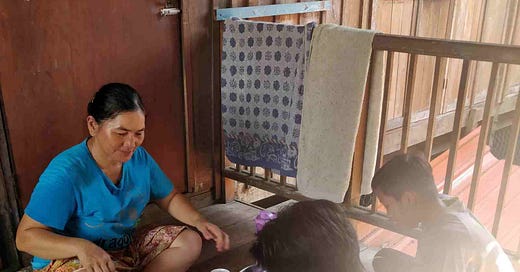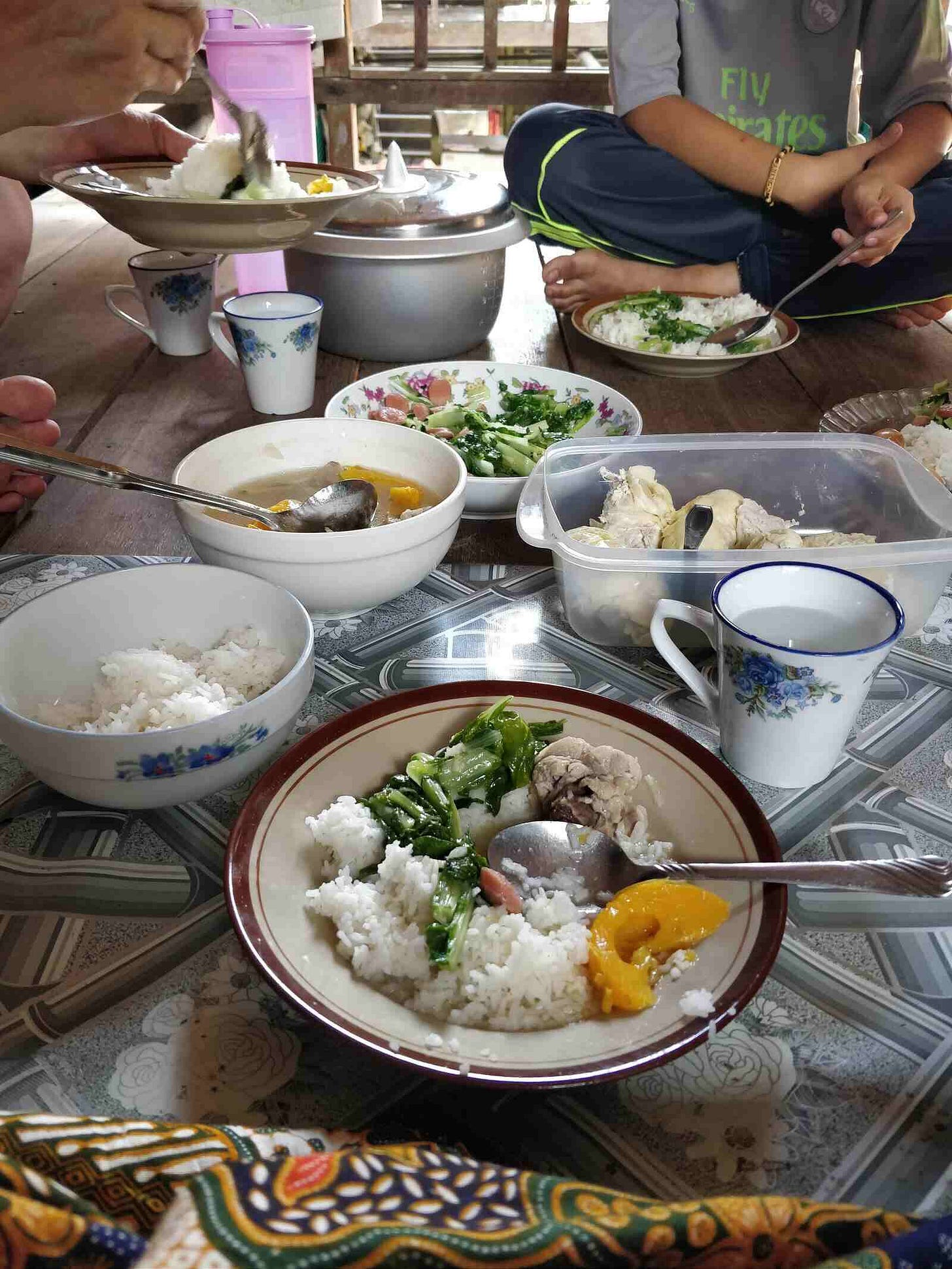“Sorry, it’s just basic,” Auntie Edan says as we sit down for lunch on the wooden floor outside her kitchen, opposite her garden nook. We’re with her two nephews. The older one is indifferent to my presence and focuses on his meal; while the younger one, Winston, has spent the past couple of hours following me down the corridor of the longhouse as we chatted with the elders in search of a near-forgotten folklore. Earlier, when Auntie Edan excused herself in the midst of our midday go-see to prepare lunch, Winston unexpectedly filled the translator role; peppering interactions with witty remarks and blunt curiosity.
Yet, far from basic, spread out on the floor before us, are three side dishes: chicken and pumpkin stew—its cloudy broth is as hearty and subtle as one would expect a homemade soup to be; stir-fried greens with sliced frankfurters—a fail-safe combination; and fresh durian—to be eaten with plenty of white rice.
I always wondered why womenfolk, be it in a rural area or in the city, often feel the need to apologise for such things, including trivial instances, which are not within one’s control, like the weather or traffic. As an outsider moving between spaces, kitchens and tables, I’ve noticed that an apology almost always precedes a dish. Especially from the person who prepares and shares her food.
She created space for me. Someone, who up until several hours ago, she didn’t know existed.
Auntie Edan’s homecooked meal | Photos by Dee May Tan, August 2019
This off-cut, and final edition of the mini ‘Eating Together’ series, is taken from a storygathering trip to Belaga, Sarawak in Borneo, Malaysia. Here, I’m at Uma Daro or Daro Longhouse to search for memory fragments of the Lake Dian folklore, a story recalled by the elders, but no longer by those in the Boomer generation, who have been induced into mainstream religion since birth.
The story, ‘Splintered Lores’, a tale of a Kayan noble who was sent to earth in a durian, and its various versions as told by the elders from two different longhouses, including the one where the noble himself was said to reside, can be found in Plates, Vol.2: Durian.
If you missed the previous editions of this four-part ‘Eating Together’ series, you can catch up here:
#1 Food Mass
Did you enjoy this mini series of off-cuts and unpublished soundbites collected from the many storygathering trips? Would you like to see more? Let me know in the comments or feel free to reply to this postcard.
Until next week, thanks for being here.
This week, I’m
working on: cultivating new conducive spaces for Plates, Vol.4: Seeds
reading: Don Quixote by Miguel de Cervantes
Plates is an independent print magazine that uses food as a conversation starter and offers alternatives to mainstream food culture narratives. If you enjoyed reading this postcard, feel free to forward it to a friend; leave a comment; or, if you’ve been meaning to, but haven’t quite gotten around to it, grab a plate and introduce yourself here. Sporadic, but intentional, updates on IG@platesmagazine.





